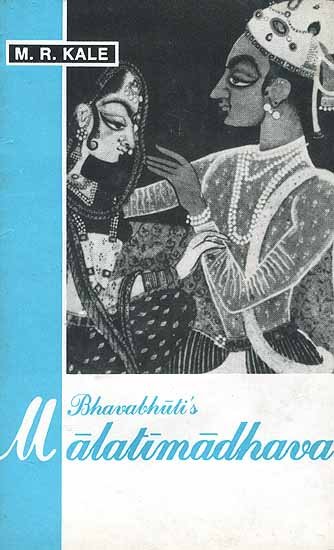Malatimadhava (study)
by Jintu Moni Dutta | 2017 | 52,468 words | ISBN-10: 8120813057 | ISBN-13: 9788120813052
This page relates ‘Bhayanaka Rasa (The Terrible Sentiment)’ from the English study on the Malatimadhava of Bhavabhuti:—A Prakarana type of Drama in ten acts revolving around the love-story of Malati (from Padmāvatī) and Madhava (from Vidarbha). This study discusses the history of its author and the literary, social, religious, historical and cultural aspects of the Malatimadhava.
Part 1.3g - Bhayānaka Rasa (The Terrible Sentiment)
The Bhayānaka rasa or the terrible sentiment creates feeling of fear in mind. The terrible sentiment has its basis the permanent mood of fear. The determinants of this sentiment are like hideous noise, sight of ghost, panic and anxiety due to untimely cry of jackals and owls, empty house or forest etc. Trembling of hands and the feet, horripilation, change of colour are accepted as the consequent state of this rasa. The transitory states are paralysis, perspiration, fear, stupefaction, agitation, death and the like.[1]
In the Mālatīmādhava, Bhavabhūti has delineated the sentiment of fear in an excellent way. In the 5th act of this Prakaraṇa Bhavabhūti puts some verses to suggest Bhayānaka rasa. As for instance the verse paryantapratirodhimedura......................[2] etc itself reveals the expansive frightful darkness of cemetery ground as also the disclosure of brilliancy of the fires of the funeral pyres. It also reveals several unfamiliar actions of demons that they make challenging roars by their confused kilkilā noises in the cemetery ground. Here, the terrible sight of ghosts is the ālambanavibhāva, frantic sports of ghosts are the uddīpanavibhāvas, confused kilkilā noise is the nubhāvaa and the great joy of ghosts is the vyabhicāribhāva. Again, when Mādhava made an announcement at the cremation ground that he would sell human flesh to the ghosts, instantly, the cemetery ground seems to be in motion all around, noisy with the indistinct and tumultuous uproar of the formidable demons walking about all sides and crowded with the goblins that they made their appearance. However, this scene unequivocally creates the feeling of fear in the minds of spectators.
Moreover, in the verse tatpṛthurasano gramāsya gartam.....................[3] etc. where the most formidable nature of ghosts is described and they are compared with old Rohina trees which has the horrible hollows on account of active pythons therein. Hence this verse is an example of Bhayānaka rasa. Again, a terrible sight of frightened Mālatī is found while Aghoraghaṇṭa has raised his sword with the intension of killing her. At that moment, however Mādhava has appeared there and having seen him unexpectedly Mālatī embraces Mādhava due to fear.
Thus, Bhavabhūti has created every situation perfectly to suggest Bhayānaka rasa. Although, Bhavabhūti delineates this sentiment only in the 5th act, yet he properly uses the frightful aspects at proper places to suggest the Bhayānaka rasa.
Footnotes and references:
[1]:
atha bhayānako nāma bhayasthāyibhāvātmakaḥ/sa ca vikṛtaravasatvadarśan aśivolūk trāsodvegaśūṇyāgārāraṇyagamanasvajanavadhabandhadarśana śrutikathādibhirvibhā vairutpadyate/tasyapravepitakaracaraṇanayana capalapulakamukhavaivarṇya svarabhedādibhiranubhāvairabhina yaḥprayok tavyaḥ/bhāvāścāsyastambhasvedagadgadaromāñcaca vepathusvarabhedavaivarṇy aśaṅkāmohadainyāvegacāpalajaḍatātrāsāpasmāramaraṇā dayaḥ
Nāṭyaśāstra,VI. p. 326
[2]:
paryantapratirodhimeduracayastyānaṃ citā jyotiṣā /
mojjvalyaṃ parabhāgataḥ prakaṭayatyābhogabhīmam //
saṃsaktākulakaleyaḥ kilakilākolāhalaiḥ saṃmadā /
duttālāḥ kaṭapūtanāprabhṛtayaḥ sāṃrāviṇaṃ kurvate //
Mālatīmādhava,V.11
[3]:
tatpṛthurasanogramāsyagartam /
dadhati vidārya vivarṇadīrghadehāḥ //
laladajagaraghorakoṭarāṇām /
dyutimiha dagdhapurāṇarohiṇānām // Ibid.,V. 15
